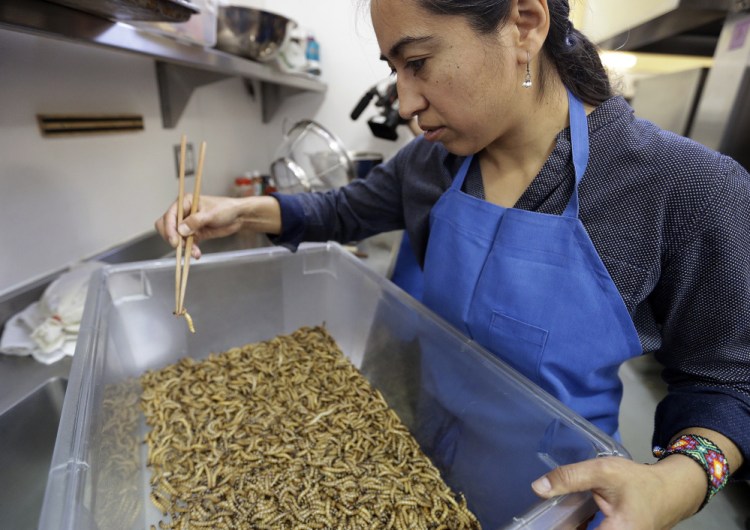SAN FRANCISCO — They hop. They crawl. They squirm. And they could be coming to a dinner plate near you.
An increasing number of “entopreneurs” are launching businesses to feed a growing appetite for crickets, mealworms and other edible insects.
These upstarts are trying to persuade more Americans to eat bugs, which can be produced with less land, food and water than other sources of animal protein.
The United Nations has been promoting edible insects as a way to improve nutrition, reduce greenhouse-gas emissions and create jobs in insect production. At least 2 billion people worldwide already eat insects, according to the 2013 report by the U.N. Food and Agriculture Organization.
But it could be a tough sell for Westerners who are more likely to squash bugs than savor them.
“Insects are viewed as what ruins food – a roach in your soup, a fly in your salad. That’s the biggest obstacle – the ick factor,” said Daniella Martin, the “Girl Meets Bug” blogger and author of “Edible: An Adventure into the World of Eating Insects and the Last Great Hope to Save the Planet.”
Inside San Francisco’s La Cocina, a commercial kitchen for food entrepreneurs, Monica Martinez empties hundreds of live mealworms into a plastic container. She uses chopsticks to pull out dead ones before pouring the squirming critters on a tray and sliding them into an oven.
Martinez started Don Bugito PreHispanic Snackeria to entice American consumers with treats inspired by popular snacks in her native Mexico. Among her specialties are spicy superworms and chocolate-covered salted crickets.
“The idea is to offer another type of protein into the food market,” said Martinez, an artist and industrial designer who launched Don Bugito as a street food project in 2011. “The biggest job that we have to do is to try to get more people to try our foods.”
Don Bugito snacks are sold online or at a La Cocina kiosk in San Francisco’s Ferry Building, where retail workers recently offered free samples of chocolate-covered crickets and spicy superworms.
“It doesn’t really taste like a bug. It tastes like crunchy spices,” said Leslie Foreman, who works at a medical technology firm, after sampling a chili-lime cricket. “I’m not sure this is going to be my everyday snack, but I think it’s fun and I think it’s cool.”
“The goal is basically to make it easier and cheaper to produce industrial-scale volumes of insects that can be used in food products,” said Daniel Imrie-Situnayake, a software engineer turned entopreneur. “We’re really just scraping the surface in terms of figuring out what the potential is for insects to be part of our food system.”
Send questions/comments to the editors.




Comments are no longer available on this story